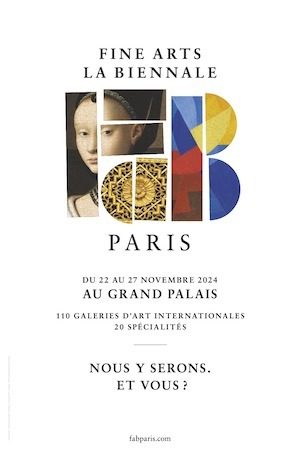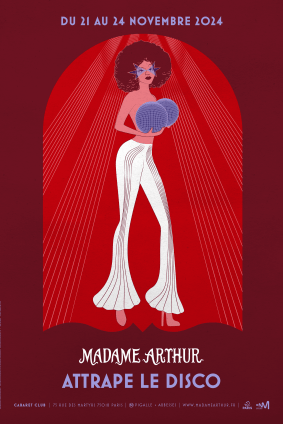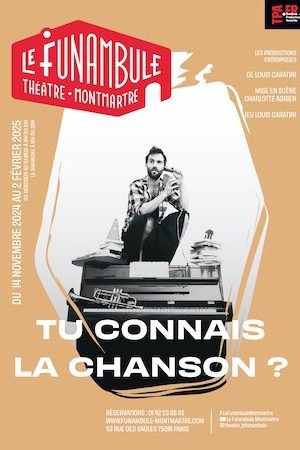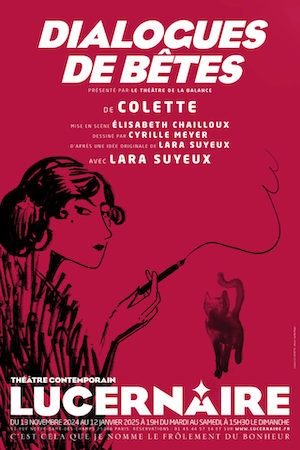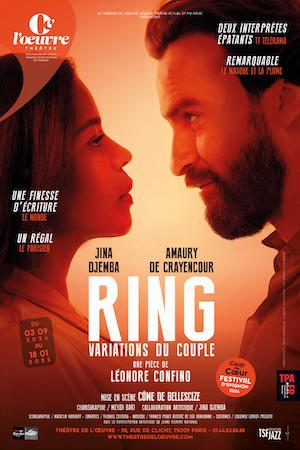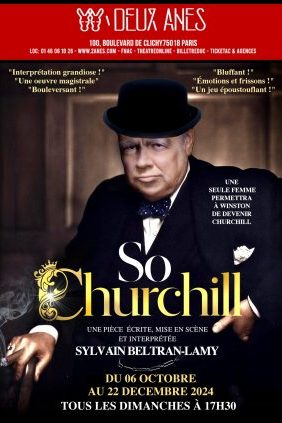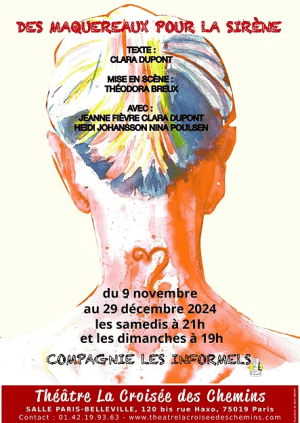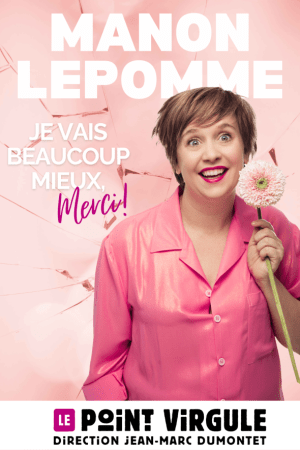SatOne : “I like to share and inspire people”
| SatOne | Rafael Gerlach aka SatOne, is born in Venezuela in 1977 and has been in Bavaria (Germany) for almost 40 years. He is a major actor of the international graffiti scene and evolved towards abstraction since the beginning of the 2000s. June 2017, Sète (France), meeting with SatOne…
What is your first experience with graffiti? I discovered the first graffitis at the beginning of the 90s along the trackside in Munich. I was fascinated by the way of painting from back then. And, in parallel, I started to graff myself in abandoned areas. How did you come to abstract painting? That’s the result of a long process and a lot of work. As far as I remember, I always drew. As a child, I drew a lot, in particular war scenes, pirates, castles, etc. In the 90s I started graffiti. More interested in figurative painting rather than letters painting, I painted characters and my friends painted the letters. After a graphic design school, I worked for a while in a graphic design agency. But it was less creative than expected so I left the agency and decided to free-lance in the illustration and graffiti area. After practicing a lot figurative painting, graphic design got my interest and I moved to abstraction at the beginning of the 2000s. I may be one of the first artists who introduced abstraction in the graffiti world at this time. Over the last years, I went further into abstraction. I believe that you can only be good at abstraction if you know the rules of the figurative representation so as to break them.
I would say challenge. I like to challenge my own limits and assume responsibility for what I’ve done. When I look back to my artworks a few years later, it does not matter if I don’t like them anymore, but what is important to me is that, with hindsight, they made sense at the time of their creation. My artwork is like a language and I constantly try to expand my vocabulary. For instance, when painting a wall, I do not replicate this painting elsewhere. I always try to create an artwork specific to the place. Evolution also seems to play a major role in your carrier… It is, indeed. I couldn’t stand painting today as I was in the 90s. I would have the impression of being stuck in a one-way street or putting shoes which are too small. Evolution is fully part of my life. I regularly look back and try to understand the meaning of what I did and design a way forward. If at a certain point I observe a form of dissatisfaction or doubts, that’s the sign I have to evolve, find a new direction. I see this process as a necessary inventory or a reboot of the system, the need to destroy something in order to build something new.
I also have the same approach when painting a wall, I try to find elements that I can integrate in my painting. You mentioned a feeling of responsibility, could you expand on it? When I’m invited to paint a wall, there are expectations: my own expectations to create something which fits the place and its environment, and also the expectations of the persons who live in this place. But both are interrelated. I’m sure that once you are satisfied with your own work, your expression is authentic and people will feel that authenticity and energy. That’s my biggest goal: I need to assume what I created. What is important is whatever you do, it comes from yourself. One of the nicest compliments I received was from an old woman at the occasion of an intervention in Poland. She appeared at the end of my intervention – with a cake! – and said, in a metaphoric way, that she had been living across the road for almost 40 years and that it was like “I had changed her windows”. But I’m sure that after a couple of months or years she will be used to this new view. Such integration is important for me. I don’t want to create an “alien” which is a total stranger to the environment, but something impressive in terms of shapes and colours, something you have to look at, but which also fits the place at the same time. I like to share and inspire people.
For me, they are complementary. If I can use a metaphor, I would say that my studio work is a kitchen or laboratory, whilst painting on walls is more like a playground. What I like in the studio work is to experiment tools, techniques, mediums, colours, etc. Due to time constraints, the experimentation is however rather limited outside. Do you have a message? Rather than a real message, it is a more a testimony. I like to observe the surrounding and compress and reflect it in my painting. It could be like giving people glasses with a “SatOne’s filter”. I observe and translate it in my own language. What are your influences? My influences are quite wide ranging. In the 90s, it was first of all the graffiti writers in the Munich area and the various art history books my parents offered me. They quickly noticed my appetite for art and tried to feed it by making me discover famous painters. Later the graphic design magazines and books I read and the various exhibitions I visited when I was a student also inspired me a lot. Today, the most inspiring for me is conversations with other artists. I’m more interested in the creative energy of other artists, understanding what drives them to create, rather than in the final artwork. Their energy gives me appetite to work harder on my own work. And abandoned places are still a great inspiration. I take pictures and use some of these elements in my artworks. “Graffuturism”. Does it mean something to you? I feel rather uncomfortable with labels. However, when Poesia created the term of “graffuturism” in San Francisco at the beginning of the 2000s, it was the first time I felt familiar with a direction. I see “graffuturism” as a platform or movement of people who come from the graffiti scene and developed in a different way, rather than a label. However, if I had to label myself, I would say a muralist artist, an artist who also paints walls or… mostly an abstract painter.
Intuition. I observe the wall and immediately get the feeling that I will enjoy or not painting it. As Herman Hesse said in relation to people, there’s a magic at the beginning. I have the same impression with walls, I know immediately whether I will enjoy painting it. How do you start mural painting? I observe the wall and its environment and I use the impressions and emotions I had when discovering the place to prepare the sketch. When participating to a festival, I receive photos of the wall and the surrounding, this helps me finding elements that I can integrate in my painting. For instance, when I saw photos of the wall in Sète I was going to paint for the 2017 K-Live festival, it reminded me of the front of a ship, a light tower or a sun clock. I also realised that it was very visible, like a stage. So I had the conviction I had to play with the sun cycle. Could you describe this mural painting in Sète? The title is “Rise and Fall”. It refers to the cycle of the sun, sunrise and sunset. The sun disappears but it is necessary in order to impulse a new cycle. It is also, more generally, reminiscent of the circle of life and its up and downs. Emotions seem to play a significant role in your act of creation… Indeed. I see my artworks as pages of a diary or a photo which expresses the feelings I had at a particular stage of my life. That’s maybe why I like to give titles to my artworks and write the story behind it. What is your best memory of illegal painting? Painting at night has its very own thrilling. Now, I don’t find too much time for this, but it’s always refreshing to explore new places at night. One of my favourite moments was in Norway. I found an abandoned tunnel of 1.5 km. There were some paintings at each extremity of the tunnel but further inside, it was totally dark. I couldn’t see anything without my torch. After wile I felt very comfortable of being alone in the dark and the silent. In such experiences, what remains is the memory of the feeling. The painting may be more an excuse to explore abandoned places and leave a trace that sometimes just a couple of persons will discover.
I travel a lot in connection with my work. I paint all over Europe. One of my favourite moments was in 2015 in India. I was invited by the Goethe Institute to pain a train station with other artists. We were provided with the equipment but we did not know at all what colours we would have. Consequently, I did not come with a determined idea of my painting. I took pictures and made a sketch on my computer when coming back at the hotel with the immediate influence of the place. We had to improvise with the material. It reminded of the beginning of the 90s, when we had to improvise and the equipment was limited. I don’t want to choose between different artistic times, each period has its own advantages, but it was a more naive and spontaneous time. Where can we find your murals in France? Rouen (Rouen impressionnée festival, 2016), Toulouse (Rose Béton festival, 2016), Saint Gervais (2km3 project, 2017), Sète (K-Live festival, 2017), … Do you always work alone? I indeed like to work on my own. But I had great projects with Roids, an artist from the UK. For instance, in the context of the project called “Icarus_13”, we painted together a 737 Boeing plane. Do you listen to music when painting? In my studio, I often listen to audiobooks. Philosophic and psychological things and also novels. I like this sensation of diving simultaneously into two different worlds: the painting and the world of the writer. Outside, the music helps me sometimes to isolate from the street noise and also influences me. I like listening to totally different kinds of music. What makes you laugh? Weird or bizarre situations, coincidences… things that do not fit to the frame. Marie-Fleur Rautou [ © SatOne ] More on Artisik Rezo :
|
Articles liés
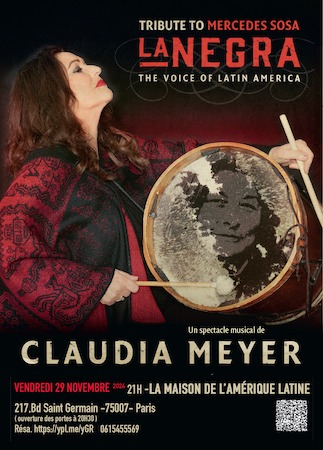
“La Negra” : un hommage à Mercedes Sosa par Claudia Meyer à la Maison de l’Amérique latine
Le caractère original et innovant de l’angle choisi par Claudia Meyer est de faire revivre l’artiste Mercedes Sosa (10 ans déjà) et de redécouvrir l’œuvre et l’itinéraire d’une femme internationalement connue pour sa voix, son engagement, ses succès et...
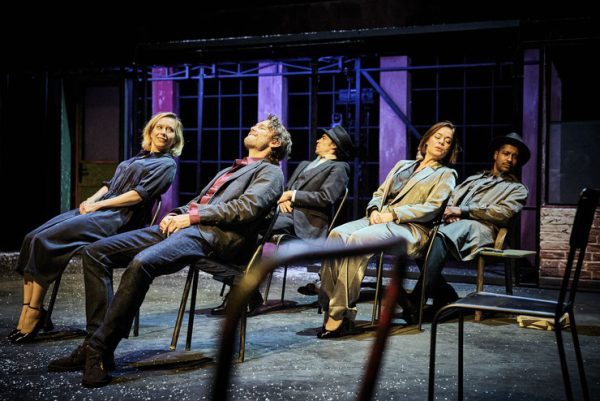
“Une trilogie new-yorkaise”, Paul Auster en miroir d’Igor Mendjisky au Théâtre de la Ville
Dans une fresque en forme de thriller de près de quatre heures avec entractes, Igor Mendjisky déclare sa flamme à l’écrivain américain Paul Auster et sa “Trilogie new-yorkaise”. Trois romans constituent les trois histoires qui croisent des détectives et...
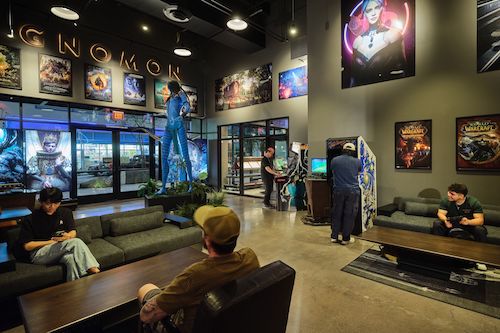
Effets visuels (VFX), jeux vidéo et animation : l’école américaine GNOMON intègre le groupe EDH
GNOMON, établissement d’enseignement supérieur privé américain, spécialisé dans les domaines des effets visuels (VFX), des jeux vidéo et de l’animation, intègre le Groupe EDH, leader français de l’enseignement supérieur spécialisé dans la formation aux métiers créatifs. Fondée par Alex...
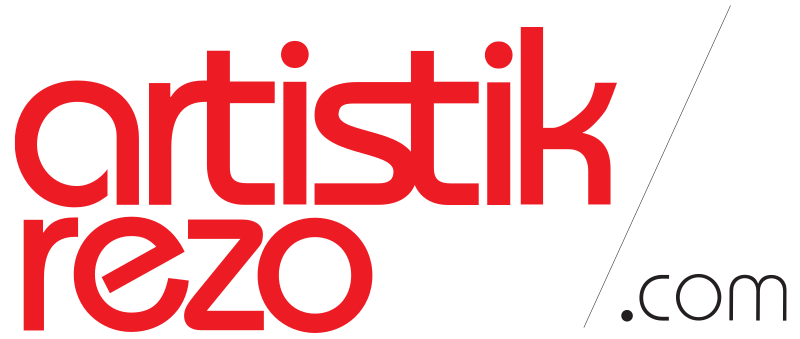


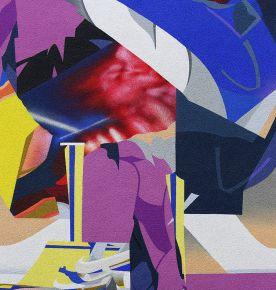
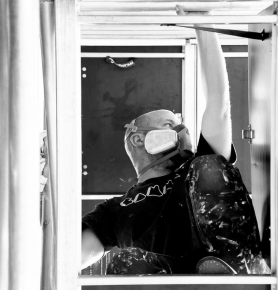 What is your main driving force?
What is your main driving force?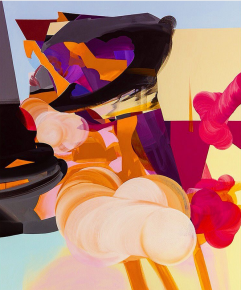 For instance, a few years ago, I wasn’t fully satisfied with my studio work: I realised that everything was too much under control. I needed to experiment and integrate new elements. So I created a tool – a kind of rotating brush – that I now use for almost three years in my paintings on canvases. When painting with this tool, I cannot totally control the result and have to adapt to the accidents. Integration of external or uncontrollable elements is challenging and stimulating.
For instance, a few years ago, I wasn’t fully satisfied with my studio work: I realised that everything was too much under control. I needed to experiment and integrate new elements. So I created a tool – a kind of rotating brush – that I now use for almost three years in my paintings on canvases. When painting with this tool, I cannot totally control the result and have to adapt to the accidents. Integration of external or uncontrollable elements is challenging and stimulating.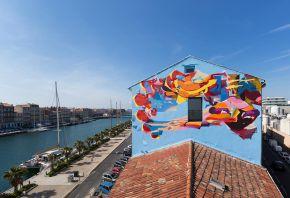 How do you conciliate your studio work with your work in the street?
How do you conciliate your studio work with your work in the street?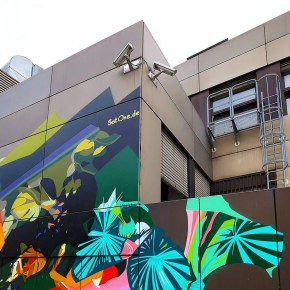 How do you choose a wall?
How do you choose a wall?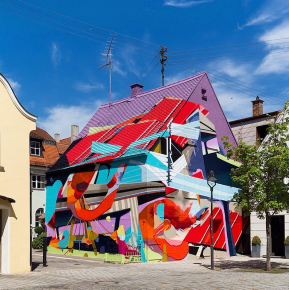 Do you often travel?
Do you often travel?